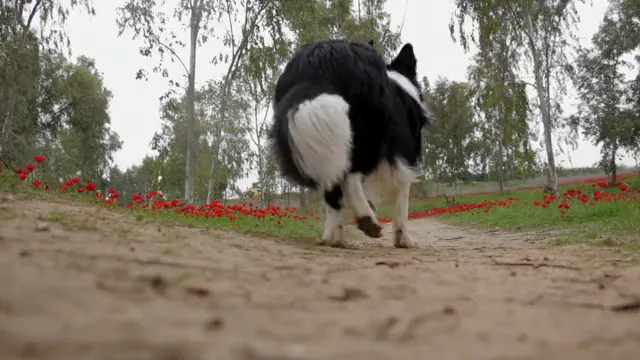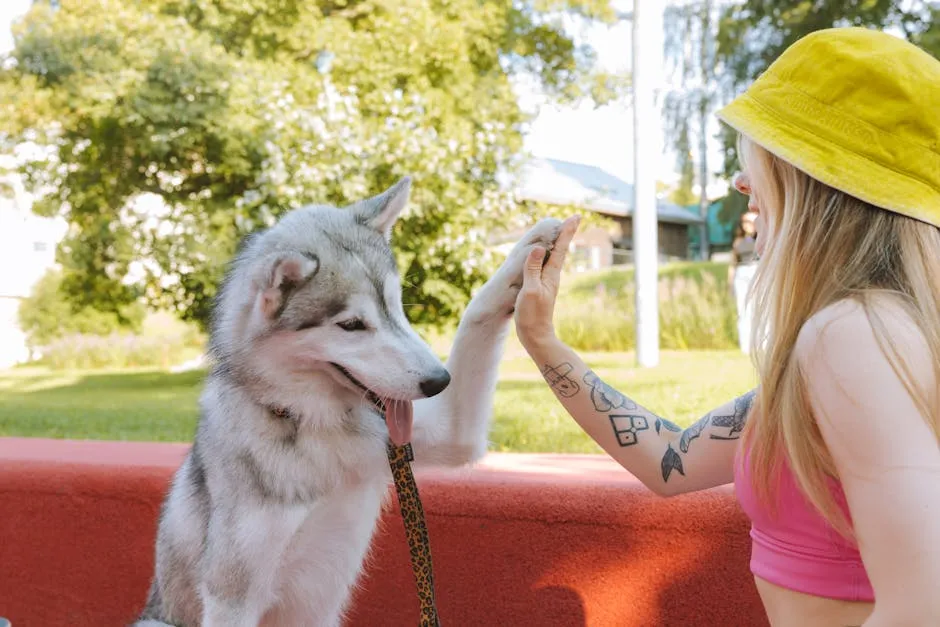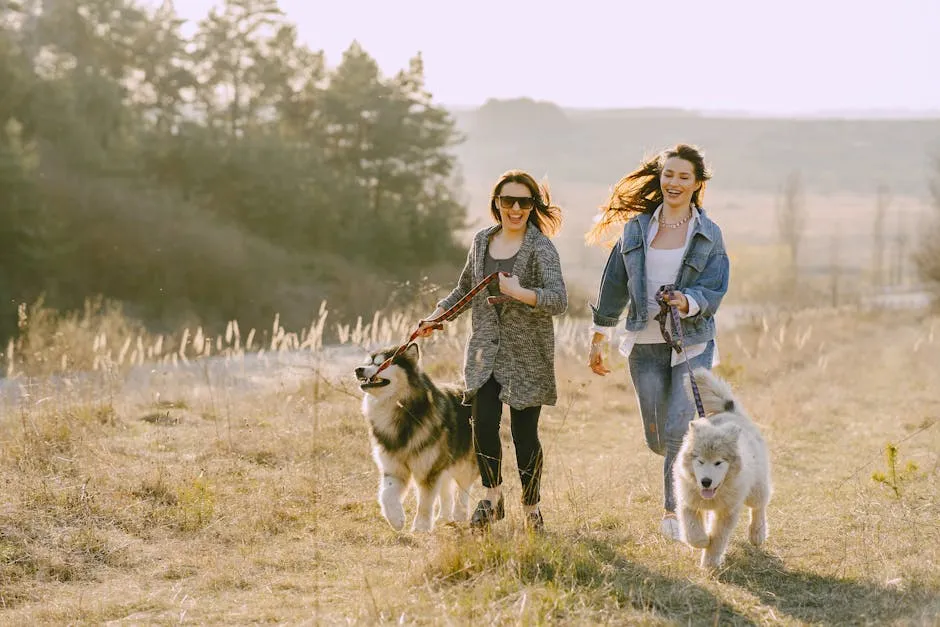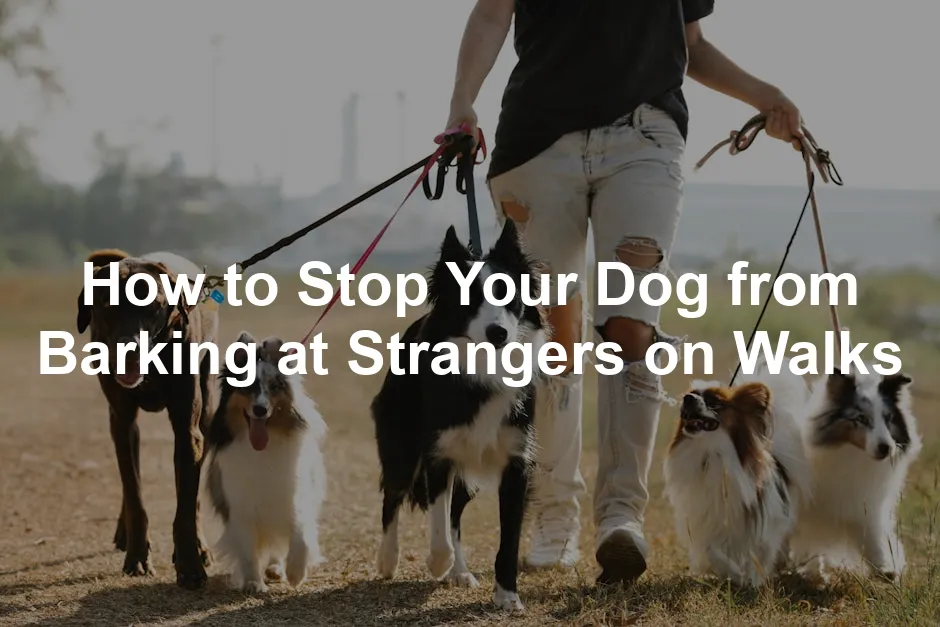Introduction
Many dog owners face a common challenge: their furry friends barking at strangers during walks. This behavior can be quite frustrating, turning an otherwise enjoyable outing into a stressful event. Imagine strolling through the park, only to be met with a barrage of barks that could scare off even the bravest of passersby! Addressing this barking is important for a peaceful walk. Not only does it help maintain your sanity, but it also creates a more pleasant experience for others. The good news? This article will arm you with actionable tips and training strategies to help your dog manage this behavior effectively. By understanding your dog’s triggers and employing positive reinforcement, you can turn those barks into calm interactions, paving the way for delightful strolls together. And while you’re at it, why not reward your pup with some delicious dog training treats? They’ll love you for it!
Understanding the Behavior
Why Do Dogs Bark at Strangers?
Dogs bark at strangers for several reasons, and it often boils down to instinctual behavior. Territorial instincts play a major role; dogs naturally feel the need to protect their space. If they perceive a stranger as a threat, they might bark to warn them off. Excitement is another common reason, especially in well-socialized pups. They see someone new and can’t contain their enthusiasm, leading to a yappy welcome. Fear is also a big player. A dog that has had little exposure to new people may bark out of anxiety. This barking often stems from past experiences that left the dog feeling uneasy. For instance, a rescue dog that was previously neglected may react defensively to new faces. To help with this, a dog training clicker can be an excellent tool for reinforcing positive behavior! Consider the case of a terrier mix who barks excessively at children. Initially sweet at the shelter, she transformed into a barking machine at home. Understanding why dogs exhibit such behaviors can guide owners in addressing them effectively.
The Role of the Owner’s Body Language
Your demeanor during walks can greatly influence your dog’s behavior. If you’re tense or anxious, your dog may pick up on these cues and feel compelled to react. Dogs are experts at reading their owners’ body language. Maintaining a calm, relaxed posture is crucial. And hey, why not make your walks even more enjoyable with a dog leash with padded handle? Comfort for both you and your pup! Practice loose-lead walking to avoid pulling or tension on the leash. When you encounter a stranger, try to remain composed. Take deep breaths and project calmness. This not only helps your dog feel secure but also reinforces the idea that there’s no need to bark. Remember, you are your dog’s anchor in uncertain situations.
Training Techniques to Curb Barking
Building a Positive Association with Strangers
Counter-Conditioning
Counter-conditioning is a training technique that helps your dog associate strangers with positive experiences. Instead of viewing each passerby as a threat, we want our furry friends to see them as potential treat dispensers! This method uses rewards, like high-value treats, to change your dog’s emotional response to strangers. And speaking of rewards, have you considered a dog treat dispenser ball? It’s a fun way to keep them entertained while reinforcing good behavior! Start by identifying a comfortable distance from a stranger where your dog remains calm. Have some tasty treats ready; think chicken, cheese, or anything that makes their tail wag with excitement! When you spot a stranger approaching, call your dog to you and ask them to sit. As they sit quietly, reward them with a treat. This creates a positive connection in their mind. Repeat this process several times. If your dog barks, they’re too close to the stranger. Gently move them back to a distance where they feel comfortable. It’s like playing hide and seek, but with fewer barks and more snacks! Over time, gradually decrease the distance to the stranger, rewarding calm behavior consistently. Once your dog begins to associate strangers with treats, you can introduce brief interactions. Encourage strangers to toss treats to your dog, so they learn that new people bring good things. Remember, patience is key! With persistent practice, your dog will start viewing strangers as friendly faces rather than adversaries.
For additional insights on dog training tips for adopting a rescue dog with anxiety, consider exploring various strategies that can help your furry friend.
Gradual Desensitization
Gradual desensitization is another effective strategy. It involves slowly exposing your dog to strangers at a distance where they feel safe. The goal is to reduce their barking response step-by-step, like a slow dance instead of an all-out sprint! Begin by finding a quiet area with minimal foot traffic. Identify a spot where your dog can see a stranger from afar. When your dog notices the stranger, reward them for remaining calm. Treats should rain down like confetti every time they stay quiet. The idea is to reward calm behavior and create a positive association with the sight of strangers. To keep your dog comfortable, consider using a dog harness for no-pull training! As your dog becomes more comfortable, gradually reduce the distance to the stranger. You might start at 50 feet and work your way to just a few feet away. Each time a stranger passes, reward calm behavior. If your dog begins to bark, you’ve pushed them too close. Simply step back to a distance where they can stay calm and try again. Practice this regularly. It’s essential to be consistent and patient. You may not see results overnight, but with time, your dog will learn to stay calm around strangers. Remember to celebrate the small victories along the way, like a wagging tail or a quiet moment. These are your milestones towards a peaceful walk!
Commands and Distractions
Teaching the “Quiet” Command
Teaching your dog the “quiet” command can be a game changer for walks. It’s like giving them a magic word to silence the barks! Start by allowing your dog to bark a few times. Once they’ve expressed their feelings, calmly say “quiet” while gently holding their muzzle. This gentle touch signals that it’s time to hush up. And while you’re training, why not grab a dog grooming kit? A well-groomed pup is a happy pup! If your dog stops barking, even for a moment, reward them immediately with a treat! Gradually increase the time they need to remain quiet before receiving the reward. It’s all about building that patience muscle! Use treats as motivation, but be consistent with your commands. Practice this command in various environments. Start at home, then move to the backyard, and eventually take it to the park. You want your dog to learn that “quiet” applies everywhere! Over time, they’ll learn that silence earns them treats and praise, making barking less appealing. If your dog struggles with the muzzle hold, don’t fret! Use treats to redirect their focus. Instead of waiting for them to bark, preemptively offer a treat when you see a stranger approaching. This way, they associate quiet moments with tasty rewards. And remember, practice makes perfect! Keep sessions short and fun to maintain their interest and enthusiasm.
Distraction Techniques
Distraction can be a brilliant tool for managing barking. Use engaging objects like squeaky dog toys or noise-makers to redirect your dog’s attention when you see a stranger. The moment your dog begins to bark, grab a noisy toy or shake a container filled with treats. This should catch their attention faster than a squirrel on the run! Once your dog’s focus shifts to the distraction, give the command to sit or stay. When they comply, reward them immediately! This teaches them that focusing on you or the toy is more rewarding than barking at strangers. It’s like a magic trick; you distract, they focus! Additionally, practicing these distractions at home can help solidify this behavior. Have friends or family members walk by your house while you practice. This allows you to simulate real-life situations and reinforces positive behavior in a controlled environment. With time, your dog will learn that barking leads to distractions, while staying calm leads to treats. How’s that for a win-win?
Preventative Measures
Managing the Environment
Choosing the right walking paths can significantly reduce your dog’s barking at strangers. Opt for quieter routes where you won’t encounter crowds. Parks during off-peak hours or quiet neighborhoods can be excellent choices. The less stimulation your dog experiences, the calmer they will be. And for those hot days, don’t forget to bring along a dog cooling mat to keep them comfortable! Avoiding busy areas helps to limit the number of strangers your dog sees. If you usually walk during peak times, consider adjusting your schedule to take leisurely strolls during quieter hours. Early mornings or late evenings might just be the golden hours for peaceful walks! At home, managing your dog’s exposure to strangers is equally important. Using barriers like tall fences can help keep their territory secure. If your dog tends to bark at passersby from the window, consider closing the curtains or using frosted glass. This way, they won’t feel the need to defend their space from every moving target. Additionally, creating a calm environment at home can help reduce overall anxiety. Ensure your dog has a designated quiet space where they can retreat when feeling overwhelmed. Add comfortable bedding and some favorite toys to make it their sanctuary. By managing both your walking environment and home setting, you’ll help your dog feel more secure and less inclined to bark at strangers. With a little foresight and planning, you can transform your dog’s behavior and make walks a delight!
Consistency and Practice
Importance of Regular Training Sessions
Regular training sessions are the secret sauce to successfully stopping your dog from barking at strangers. Just like humans, dogs thrive on repetition and consistency. It’s essential to practice regularly, so your furry friend knows what to expect and learns the desired behavior. Why not keep track of your progress with a dog training book: “The Art of Raising a Puppy”? It’s a great resource for new dog parents! Aim for short, focused training sessions lasting about 5 to 10 minutes. Dogs often have short attention spans, so keeping it brief helps maintain their interest. You can incorporate these sessions into your daily routine, perhaps before or after walks. This not only reinforces training but also strengthens your bond. Aim for at least three training sessions a week. Consistent practice allows your dog to internalize commands and distractions. If your dog struggles with a particular technique, don’t hesitate to backtrack and focus on simpler commands. You can gradually build up to more complex training as their confidence grows. Patience is crucial in this process. Celebrate the small victories, whether it’s a quiet moment during a walk or your dog successfully responding to the “quiet” command. Each step forward is progress! As you continue training, your dog will start to associate positive experiences with strangers. They’ll learn that staying calm leads to treats and praise, making barking less appealing. Remember, the goal is to create a trusting relationship with your dog through consistent practice and positive reinforcement.
Engaging Friends and Family
Involving friends and family in your dog’s training can be a game changer! It simulates real-world encounters with strangers, making practice sessions feel more genuine. Here’s how you can effectively conduct these practice sessions. First, choose a few trusted individuals who can help. Make sure they understand your dog’s behavior and training goals. Start by setting up a scenario where your dog can see your friend or family member from a distance. This distance should be close enough for your dog to notice them but far enough that they feel comfortable. Next, have your friend approach slowly while you keep your dog calm. Use high-value treats to reward your pup for staying quiet. Offer treats whenever they show calm behavior, like sitting or lying down. If your dog starts barking, your friend should stop moving and wait until your dog settles down. Reinforce the desired behavior by rewarding them with treats once they are calm. As your dog becomes more comfortable, gradually decrease the distance. This helps them learn that strangers aren’t scary. You can even have your friend toss treats to your dog, reinforcing the idea that newcomers can bring positive experiences! And while you’re at it, consider adding a dog poop bags dispenser to your walking kit—because you can never be too prepared! Repeat these sessions regularly. Consistency is key! With each practice, your dog will become more confident and less likely to bark. Plus, it’s a fantastic way to bond with friends and involve them in your dog’s training journey.
FAQs
Why does my dog bark at strangers on walks?
Dogs bark at strangers for several reasons. One common reason is territorial instincts. They often see strangers as intruders and bark to warn them away. This behavior can stem from anxiety or fear, especially in dogs with limited socialization. For example, rescue dogs may bark due to past negative experiences. Excitement can also play a role; some dogs simply want to greet new people with enthusiasm. To curb this barking, consider counter-conditioning. This technique helps your dog associate strangers with treats instead of fear. Start from a distance where your dog feels safe. When a stranger approaches, reward your dog with high-value treats for remaining calm. Gradually decrease the distance over time as your dog becomes more comfortable. Patience and consistent rewards can transform barking into calm interactions.
How long does it take to stop my dog from barking at strangers?
Training times can vary widely based on individual dogs and their experiences. Factors such as age, temperament, and prior socialization play a significant role. Some dogs may show improvement within a few weeks, while others might take months to adjust. Regular training sessions and consistent practice are crucial. Focus on short sessions of 5-10 minutes a few times a week. Engage in positive reinforcement whenever your dog remains calm around strangers. Keep in mind that every dog is unique, and patience is key. With time and effort, you can make strides towards a quieter walking experience.
Should I use a muzzle for my dog when walking?
Using a muzzle can be appropriate in certain situations, especially if your dog has a history of aggressive barking or biting. Muzzles serve as a safety measure for both your dog and those around them. They can also signal to strangers to give your dog space, reducing stress for everyone involved. However, muzzles should not replace proper training. They are best used as a temporary solution while you work on behavior modification techniques. If you decide to use one, introduce it gradually and positively. Allow your dog to associate the muzzle with treats and praise. This will help them feel more comfortable wearing it during walks.
Can professional training help?
Absolutely! Seeking help from a professional dog trainer can be incredibly beneficial. Trainers possess the expertise to assess your dog’s behavior and tailor a training plan suited to your needs. They can introduce effective strategies, such as positive reinforcement and desensitization techniques. Professional trainers also provide valuable support and guidance throughout the training process. They can help you navigate challenges and celebrate your dog’s progress. If your dog’s barking persists or escalates, don’t hesitate to consult a trainer for assistance. Investing in professional help can lead to long-term positive outcomes.
What if my dog becomes aggressive towards strangers?
If your dog shows aggression towards strangers, it’s essential to take this behavior seriously. Aggression can stem from fear, anxiety, or a desire to protect. Addressing this issue requires a cautious approach and may necessitate professional help. Start by managing your dog’s environment. Keep them away from situations that trigger aggression. Gradually expose them to strangers at a distance where they feel comfortable. Use treats to reward calm behavior and create positive associations. If the aggression escalates or you feel overwhelmed, consult a professional dog trainer or a behaviorist. They can provide tailored strategies to modify your dog’s behavior safely. Remember, addressing aggression takes time and patience, but with the right approach, improvement is possible.
All images from Pexels





